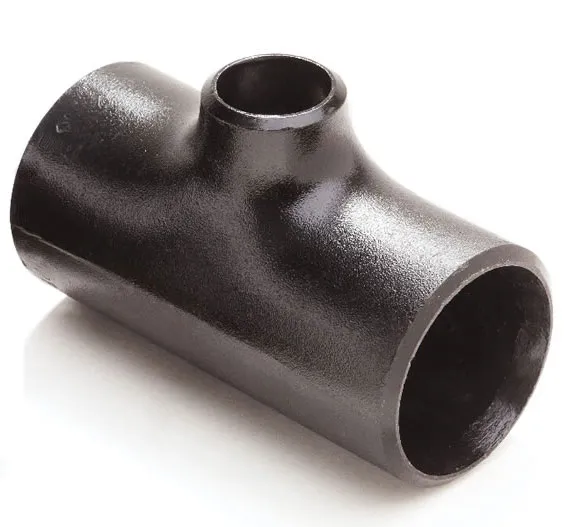-
Cangzhou Yulong Steel Co., Ltd.
-
Phone:
+86 13303177267 -
Email:
admin@ylsteelfittings.com
- English
- Arabic
- Italian
- Spanish
- Portuguese
- German
- kazakh
- Persian
- Greek
- French
- Russian
- Polish
- Thai
- Indonesian
- Vietnamese
- Zulu
- Korean
- Uzbek
- Hindi
- Serbian
- Malay
- Ukrainian
- Gujarati
- Haitian Creole
- hausa
- hawaiian
- Hebrew
- Miao
- Hungarian
- Icelandic
- igbo
- irish
- Japanese
- Javanese
- Kannada
- Khmer
- Rwandese
- Afrikaans
- Albanian
- Amharic
- Armenian
- Azerbaijani
- Basque
- Belarusian
- Bengali
- Bosnian
- Bulgarian
- Catalan
- Cebuano
- China
- China (Taiwan)
- Corsican
- Croatian
- Czech
- Danish
- Esperanto
- Estonian
- Finnish
- Frisian
- Galician
- Georgian
- Kurdish
- Kyrgyz
- Lao
- Latin
- Latvian
- Lithuanian
- Luxembourgish
- Macedonian
- Malgashi
- Malayalam
- Maltese
- Maori
- Marathi
- Mongolian
- Myanmar
- Nepali
- Norwegian
- Norwegian
- Occitan
- Pashto
- Dutch
- Punjabi
- Romanian
- Samoan
- Scottish Gaelic
- Sesotho
- Shona
- Sindhi
- Sinhala
- Slovak
- Slovenian
- Somali
- Sundanese
- Swahili
- Swedish
- Tagalog
- Tajik
- Tamil
- Tatar
- Telugu
- Turkish
- Turkmen
- Urdu
- Uighur
- Welsh
- Bantu
- Yiddish
- Yoruba

Dec . 10, 2024 16:26 Back to list
Understanding ANSI B16.36 Standards for Flanged Pipe Connections in Industrial Applications
Understanding ANSI B16.36 A Guideline for the Design and Specification of Pipe Flanges
In the industrial world, the importance of pipe flanges cannot be overstated, as they serve as critical components in various piping systems. Among numerous standards that govern the design, manufacturing, and application of these flanges, ANSI B16.36 stands out as a pivotal reference for engineers, manufacturers, and project managers in the field of piping. This standard specifically pertains to the requirements for long weld neck flanges, providing essential guidance for the reliable and effective use of these components.
Background of ANSI Standards
The American National Standards Institute (ANSI) is a private, non-profit organization that oversees the development of voluntary consensus standards for products, services, processes, systems, and personnel in the United States. ANSI standards, including those within the B16 series, are widely recognized and adopted not only within the U.S. but also internationally. The B16 series primarily focuses on piping flange dimensions, tolerances, materials, and pressure-temperature ratings.
Scope of ANSI B16.36
ANSI B16.36 specifically applies to long weld neck flanges that are used in high-pressure and high-temperature applications. They are designed to facilitate connections between piping systems and ensure integrity under rigorous operational conditions. The standard describes the dimensions, materials, and testing methodologies that should be adhered to for creating these flanges, ensuring their compatibility with a variety of applications, including chemical processing, petrochemical, and power generation industries.
Key Provisions of ANSI B16
.361. Dimensions and Tolerances ANSI B16.36 provides detailed specifications regarding the dimensions of long weld neck flanges. This includes the diameter, thickness, and bolt holes’ spacing. Precise tolerances are established to ensure that flanges can be manufactured consistently, allowing for reliable fittings, which is crucial in preventing leaks under pressure.
ansi b16 36

2. Material Specifications The standard outlines acceptable materials for these flanges, typically including carbon steel, stainless steel, and alloy steels. This is essential, as the choice of material significantly affects the flange's performance under different operating conditions, such as temperature fluctuations, corrosive environments, and mechanical stresses.
3. Pressure and Temperature Ratings ANSI B16.36 sets guidelines for pressure and temperature ratings, categorizing flanges according to their ability to withstand particular working conditions. This information is critical for engineers when designing piping systems, as it directly influences safety and operational efficiency.
4. Testing and Quality Assurance The standard specifies the testing protocols that flanges should undergo to ensure their integrity. This includes pressure testing, visual inspections, and non-destructive testing methods. Such rigorous testing measures are instrumental in identifying flaws or weaknesses before the flanges are installed, thereby reducing the risk of failures in the field.
The Importance of Compliance
Adhering to ANSI B16.36 is vital for manufacturers and users of long weld neck flanges. Compliance not only ensures the safety and reliability of piping systems but also facilitates interoperability between different systems and components. Engineers and project managers who incorporate ANSI standards into their projects can confidently assure stakeholders of the quality and performance of their systems.
Conclusion
In summary, ANSI B16.36 is a crucial standard that underpins the design and manufacturing of long weld neck flanges. By providing detailed specifications concerning dimensions, materials, pressure ratings, and testing methods, it plays a significant role in enhancing the reliability and safety of piping systems in various industries. A solid understanding and implementation of this standard are essential for professionals in the field, ensuring that piping operations can proceed smoothly and effectively, with minimal risk of failure or safety incidents. As industries continue to evolve, standards like ANSI B16.36 will remain central to driving innovation and excellence in engineering practices.
Latest news
-
ANSI 150P SS304 SO FLANGE
NewsFeb.14,2025
-
ASTM A333GR6 STEEL PIPE
NewsJan.20,2025
-
ANSI B16.5 WELDING NECK FLANGE
NewsJan.15,2026
-
ANSI B16.5 SLIP-ON FLANGE
NewsApr.19,2024
-
SABS 1123 FLANGE
NewsJan.15,2025
-
DIN86044 PLATE FLANGE
NewsApr.19,2024
-
DIN2527 BLIND FLANGE
NewsApr.12,2024
-
JIS B2311 Butt-Welding Fittings LR/SR 45°/90° /180°Seamless/Weld
NewsApr.23,2024











